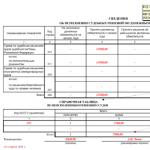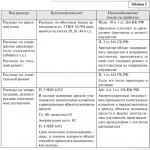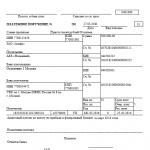Handball- a team sport in which the goal is to throw as many balls as possible into the opponent’s goal. Unlike football, the ball is thrown by hand.
How is handball translated?
Handball sounds in English like handball from hand - hand and ball - ball.
The International Handball Federation (IHF) is the governing organization of world handball. The headquarters is located in Basel (Switzerland).
History of the origin and development of handball
Handball was invented by Danish football players at the turn of the 19th–20th centuries. This game has come to replace football in the winter. The main difference from football is the need to play with your hands and the reduction in team size to 7 people.
Where did handball originate?
In 1920, the first games for the Cup and the German handball championship took place in Berlin. In 1923, the rules of the game were adjusted. The size of the ball was reduced, the rules of “three seconds” and “three steps” were introduced, which significantly improved the playing technique. In 1925, the first international meeting between the German team and the Austrian team took place. The match ended with a score of 5:6.
In 1926, handball was recognized as an international sport, which gave impetus to its development in a number of countries. Clubs began to appear in Luxembourg, Spain, Switzerland, and in 1928 the International Amateur Handball Federation was created in Amsterdam. In 1936, handball was first included in the program of the Olympic Games in Berlin.
In 1946, handball received a new impetus for development and the International Handball Federation (IHF) was created. It approved a program aimed at reviving world handball, and also outlined a plan for holding world championships (in the 11x11 format). Since 1966, there have been 7 people in the handball team.
Who invented handball?
Danish football players at the turn of the 19th–20th centuries.
Handball rules (briefly)
The rules of handball are the same for men and women, here are the main ones:
How many halves are there in handball?
Two halves.
- A handball team consists of 16 people, of which no more than 7 players can be on the court at a time, the rest are substitutes. One of the players on the court is the goalkeeper. At the beginning of the game, each team must have at least 5 players.
- Handball playing time. Matches for adult teams consist of two halves of 30 minutes each with a 15-minute break. Matches for children's teams aged 8-12 years old consist of two halves of 20 minutes each, and matches for teams aged 12-16 years old consist of two halves of 25 minutes each. After the break, the teams change sides of the court. If it is necessary to identify the winner, additional time (overtime) may be assigned - two halves of 5 minutes each with a 1-minute break.
- The match begins with the ball being kicked into the center of the field. Players can safely touch the ball with any part of their body except their feet. Before making a pass, you must make sure that the player is more than 3 meters away.
- Before making a pass or throwing the ball into the opponent's goal, each player has the right to hold it only for three seconds. At the same time, you can take no more than 3 steps with the ball in your hands, then you have to throw it to someone else.
- During the game, the coaches of both teams have the right to take one time-out lasting 1 minute. The referee can stop the clock and call a time-out in several cases:
- Disqualification and removal from the game for 2 minutes.
- Purpose of a seven-meter throw.
- Violation of the substitution rules or bringing an extra player onto the court.
- If the judges need to consult.
- Players can be replaced an unlimited number of times. A replacement team member may enter the field only after the handball player being replaced has left it.
- In case of violations, players receive warnings; for repeated violations, they are removed from the field for two minutes (they may be completely disqualified). In addition, seven-meter or free throws may be awarded. A seven-meter throw is carried out from a distance of seven meters from the goal; when performing a throw, opponents have no right to interfere with the player in any way.
- If the transfer of the ball from the defensive zone to the offensive zone is delayed, then this is called passive play. The team is penalized with a free throw from the place where the ball was when play was suspended.
- In handball, single-impact dribbling (hitting the ball on the floor every 3 steps) and multi-impact dribbling are used.

How long does a handball match last?
Matches for adult teams consist of two halves of 30 minutes each with a 15-minute break. Matches for children's teams aged 8-12 years old consist of two halves of 20 minutes each, and matches for teams aged 12-16 years old consist of two halves of 25 minutes each.
In addition, handball rules allow:
- Use your hands to block and control the ball.
- Use open palms to knock the ball off your opponent's hands.
- Shield your opponent with your body.
- To hinder your opponent's actions, touch him with your hands from the front.
Prohibited:
- Snatch the ball from the opponent's hands.
- Block or push away an opponent with your legs and arms.
- Carry out any physical impact on an opponent that could endanger him.
How many people are in a handball team?
A handball team consists of 16 people, of which no more than 7 players can be on the court at a time, the rest are substitutes.
Handball court
The size of a standard handball court is 40 by 20 meters. There must be a safety zone around the pitch of at least 1 meter along the touchlines and at least 2 meters behind the goal line. All lines are part of the areas they limit. The width of the marking lines is 5 cm, except for the line between the goal posts, which is 8 cm wide.

The goal area is limited by the goal area line, which is drawn as follows: opposite the goal, at a distance of 6 m, a line parallel to it, 3 meters long, is drawn. The ends of this line are connected to the outer goal lines by arcs with a radius of 6 meters, centered at the inner corners of the goal posts.
At a distance of 3 meters from the outer boundary of the goal area line, a broken free throw line (9-meter line) is drawn parallel to it.
Opposite the goal line (strictly in the center) at a distance of 7 meters and parallel to it, a 7-meter line 1 meter long is drawn.
Opposite the goal line at a distance of 4 meters and parallel to it, a goalkeeper boundary line (4-meter line) 15 cm long is drawn.
The midpoints of the lateral lines are connected by a central line.
Inventory and equipment for handball
- Handball ball made of leather or synthetic materials, and a latex or butyl chamber is installed inside. It should not be slippery or shiny. Handballs are divided into balls for beginners and professionals, match balls and training balls. According to production method: machine and hand sewing. Handballs come in 3 sizes:

- Circumference 50-52 cm, weight 290-330 grams for teams of boys 8-12 years old and girls 8-14 years old.
- Circumference 54-56 cm, weight 325-375 grams for women's teams over 14 years old and men's teams 12-16 years old.
- The circumference is 58-60 cm, the weight of the handball ball is 425-475 grams for men's teams over 16 years old.
- The handball uniform should be elastic, light, comfortable, soft and silent. It should be made of fabric that absorbs moisture very well. An acceptable material option may be polyester.
- Handball shoes should provide good cushioning in the sole, be lightweight and support the ankle.

Standard throws in handball
The initial throw serves as the start for the start of the game, as well as for its resumption after the ball is scored. At the beginning of the match, the right to the initial throw is determined by drawing lots, and after a goal is scored, this right is given to the team that missed the ball. The throw is performed at the referee's whistle for 3 seconds in any direction.
The throw from the sideline is performed by the opponents of the team whose player last touched the ball. A throw-in is performed if:
- the ball has completely crossed the side line, in which case the throw is taken from the place where the ball crossed the line;
- the ball has completely crossed the outer goal line, touching a field player of the defending team, in which case the throw is taken from the junction of the side line with the outer goal line;
- the ball touched the ceiling or structures above the court, in which case the throw is made from the point on the side line closest to the point of contact.
The goalkeeper throw is performed by the goalkeeper of the defending team. The goalkeeper's throw is completed if.
Handball is a fun, active game popular in Europe that combines football and basketball techniques to create a unique competitive game. To play team handball, each team must throw, dribble and pass the ball to win points from the opposing team. To play singles or doubles, which is more popular in America, you need to win points against your opponent on a court with one, two, three or four walls. If you want to know how to play each type of this game, go to Step 1.
Steps
Part 1
Team handball game- There is a goal line on the court that limits the goal area. This is the six-meter line, behind which only the goalkeeper can be. The gate itself is 2 meters high and 3 meters wide. Players can only jump onto this area if they release the ball before landing there.
- The dotted semicircle, which is located 9 meters from the goal, marks the free throw line.
- The line in the middle of the court, also called the center line.
- Get to know the ball. Traditionally, handball uses a 32-section leather ball. For women's handball, the width of the ball is 54-56 cm, and for men's it is 58-60 cm, and it is slightly heavier than the women's one.
-
Create a team. There can be 7 players on the court at the same time. One player on each team will be goalkeepers, and the other six will be field players. The total number of players in each game can be 12 (in America) or 14 (in England), which change during the game. Extra players serve as replacements for players on the field if a player is forced to leave the court, as in basketball, volleyball and other sports where there are replacements. The roles of all players, except goalkeepers, alternate during the game.
- Players wear uniforms numbered 1 to 20. Players on each team wear the same color jerseys and shorts, while goalkeepers wear a different color uniform to distinguish themselves from other team members.
- In official games there are always two referees, one for the field and one for the goal. Their decisions are considered final.
-
Understand the goals of the game. Each team scores points by throwing the ball into the opponents' goal. The team that scores the most points becomes the winner. The game may end in a draw, unless you are holding a tournament where the winner must be named. If at the end of time the teams have an equal score, then the teams play 2-5 minutes of extra time.
- A team scores a goal if the ball crosses the goal line and falls into the goal. You can score a goal with any throw: goal throw, free throw, kick-off or throw-in (you can read more about these throws below).
-
Play for the right amount of time. Traditional handball lasts 2 hours 30 minutes with a 10 minute break in the middle. Youth games and tournaments are shorter, played over 2 hours 15 or 20 minutes, split in half.
- The indicated time is the time of the game itself. The clock is stopped only in case of a timeout, once per half game, or if a player is injured.
- During the half-time break, teams change substitute players.
-
Understand what players can do on the field. Players can touch the ball with all parts of their body above the knee (which means don't kick the ball!). If a player is hit by the ball, he can remain in one place for three seconds (as in basketball, a violation), and the player can only run three steps with the ball. If players do not follow these rules, the ball goes to the other team. Players must quickly decide whether to shoot, dribble or pass the ball.
- The player can dribble the ball as much as he wants as long as his hand is above the ball. After dribbling, the three steps/three seconds rule comes into play again. If the player starts to dribble the ball again, it will be a double dribble violation and the ball will go back to the opposing team.
- Other violations that players can commit are bringing the ball into the goalkeeper's area, blocking the goal illegally, or attacking.
-
Understand the types of throws. Here's what you need to know about the types of shots in this game:
- Initial throw. The game begins with the initial throw. The initial throw is made from the center of the court. The player taking the center throw must have one foot on the center line. The remaining players must be in their own half of the court. The kickoff is taken by the team that wins the toss and is about to start the game.
- After the whistle blows, the player with the ball in the center passes the ball to another member of his team and the game begins.
- Each time a goal is scored, the opposing team receives the ball for the next kickoff. The initial throw is also carried out after the break.
- Side throw. If the ball leaves the playing field, the right to throw goes to the team that did not touch the ball last.
- Free throw. A free throw is given when the game is stopped and is taken from the place where the game was suspended. The game stops if one player grabs, pushes, hits or trips another player and receives a penalty.
- Referee's throw. An official throw occurs when the ball touches anything outside the playing field after multiple rules have been broken during simultaneous possession of the ball.
- Seven meter throw. This shot is awarded if a clear scoring opportunity is thwarted, the goalkeeper carries the ball into his own area, a field player scores the ball into his own net, or a defender enters the goal area. To make this throw, all players must be behind the free throw line, and the player taking it has three seconds.
- Goalie throw. This throw is taken if the ball bounces over the outer goal line and the last person to touch it was the goalkeeper or an opposing player. To complete this shot, the goalkeeper does not have to adhere to the three steps/three seconds rule.
- Initial throw. The game begins with the initial throw. The initial throw is made from the center of the court. The player taking the center throw must have one foot on the center line. The remaining players must be in their own half of the court. The kickoff is taken by the team that wins the toss and is about to start the game.
-
Find out what violations there are. There are many ways to commit a rule violation. If one team commits a foul, the other team is awarded a ball, throw-in, free throw or goalkeeper throw. Here are the types of violations:
- Passive game. If the ball is in the possession of one team and no attempts are made to attack or score a goal. This essentially means stalling the game.
- Intimidating the opponent with the ball.
- Snatch or knock the ball out of an opponent's hands.
- Make contact with the ball with your foot below the knee.
- To rush after a ball that lies on the floor and does not roll or move.
- Extend arms or legs to push, hold, trip, or attack a defender.
-
Understand how the progressive sentencing system works. These penalties are given when a free throw is not enough for an opponent's foul, for example if the foul is directed at an opponent rather than the ball. Here are the stages of progressive punishment:
- Warning/Yellow card. Each player can receive only one warning for violating a rule, and each team can receive no more than three.
- Removal of a player for two minutes. Appointed for serious and repeated rule violations, illegal substitution or unsportsmanlike conduct. You don't have to have a warning to get a two-minute suspension. After receiving such a penalty, a player must sit out of the game for two minutes, without being replaced by another player, and the team is forced to play without one member.
- Disqualification/red card. This is equivalent to three penalties for two minutes. After the first removal, a player may be replaced.
-
Exception. An elimination is given for assault and the player is eliminated for the rest of the game. This is a serious penalty because the offending player's team will be forced to go without one person for the rest of the game.
-
Improve your game. There are a lot of techniques and methods that help you play good handball, but the most important thing you have to do is keep playing. Here are some points that will help you improve your game.
- To succeed in the game of handball, you and your team must become good at passing the ball to each other. It's faster than dribbling and the ball will reach the goal much sooner.
- When you are defending the goal, you need to practice keeping your hands on top so that you can block shots and stop any chance of your opponents scoring the ball.
- When dribbling the ball, learn to use one hand, leaving the other to protect the ball from the opposing team.
- The most important thing is just keep practicing! The more you play, the better you will get at it.
Check out the site. The team handball court measures 20 by 40 meters. Here are some things you should know about the site:
Part 2
Singles and doubles play-
Decide whether you want to play Chinese or American handball. Both games use a smaller ball than team handball. Most formal games are played with a "small ball" or "professional ball", while street games use a large ball.
- There are three types of game (on a court with four walls, three or one), the game can be played by two, three or four players.
- Two players are more comfortable playing Chinese handball, in which the ball must bounce off the floor before hitting the wall, while in American handball the ball does not bounce off the floor.
-
Set the rules. For example, will you play American handball, where the ball must be hit twice (hit like in American handball, but used like in Chinese), or purely American handball.
- You might want to remove the ability for opponents to distract each other by not interacting with the ball, or if you're on a team, include team saves (where one person hits the ball so it goes up, bounces, and then another person hits him American style).
- You can also use independent saves. They can be applied for each team or by yourself.
Handball is a team sports game played with a ball. only with your hands.
The first rules for this sport were invented back at the beginning of the twentieth century. Since then they have undergone a large number of changes.
The latest fixes are coming for 2016 and are aimed at improving the quality and effectiveness of the game.
To receive passes in handball it is possible to use head, hips and body.
Important! Usage legs below the knee It is prohibited to accept a pass or pass the ball.
The goal of the game is to score maximum number of goals into the opponents' goal. The team that scores the most goals will win.
Site and field markings
The playing area has the shape of a rectangle, the length of which is 40 m., and the width is 20 m. Size included two goal zones and the play area itself.
The site is completely marked with lines. Two long- lateral lines, two short- goal lines and outside.

Photo 1. This is what the handball field layout diagram looks like, showing the dimensions of the different elements of the court.
Around the playground there must be safe zone. It is needed so that an accidentally thrown ball does not cause injury to spectators and fans. The width of the zone should be at least one meter on the side, And at least two meters behind the outer line.
All markings are included in the playing area that it marks out. The width of the lines is determined by the rules. The goal line must be 8 cm, and all others - 5 cm wide.
The gate area is limited by markings carried out at a distance 6 m parallel to the goal line. Length is 3m.

Arcs are drawn from each of its ends with a radius of 6 m., which connect the goal area line with the outer lines. Thus, a semicircular zone is obtained, in the center of which there is a gate.
On distance 3m. from the goal area line, there is a free throw line with a length of 9 m., marked with a dotted line. The length of the dotted lines is equal to the distance between the dotted lines, and is 15 cm.
On distance seven meters from the marking square at the gate, marked seven-meter line, one meter long.
There is a line in front of the goal at 15 cm., limiting the actions of the goalkeeper.
Attention! The location of the goal and field marking lines are fixed in the rules and cannot be changed during the game.
Intercede for players forbidden. Only the goalkeeper is allowed to cross the goal zone line. However, crossing the zone while jumping will not be considered a violation.
How long are the halves?
The length of halves and their number are regulated by the rules of the game.

The total playing time from the start of the match to the end is one hour and ten minutes, excluding additional time.
The duration of the half is 30 minutes. One match includes two halves. Halftime - 10 min.
The duration of handball matches for children's teams usually varies from 20 to 25 min., depending on the age of the participants.
How many goals does a match last?
If the match ends in a tie and it is not possible to determine who won, the judges appoint Extra time. Its duration is two halves of 5 minutes. Halftime - 1 min.
Additional time can be assigned again, if the score remains equal. In the case when the game has not advanced in the score even after the second time, this issue is resolved according to the regulations of the given handball match.
The referees do not suspend the flow of playing time in the event of short stop of the game. If a longer pause is necessary, the judges may turn off the stopwatch. Timing stops if removal or disqualification of a player, and also when the judges left for a meeting.
Command structure

The handball team includes fourteen people: 2 goalkeepers and 12 field players. Can be on the field at the same time during the game maximum 7 handball players.
As a rule, these are the most active, strong and resilient athletes. The remaining players are in reserve.
Spare The handball player can only enter the field when the player he is replacing has left the playing court.
It is mandatory to be on the playground goalkeeper.
Reference! Can become a goalkeeper any handball player who will take such an initiative. At the same time, the goalkeeper can become an ordinary player on the field.
You might also be interested in:
Player roles: what is it?
Every player is unique. As in other sports, handball players have their own positions assigned to a specific player.
The role of handball players determines the arrangement on the field, as well as their responsibilities.
The following positions are distinguished:

- Goalkeeper- guards the gate during the match. His main goal is to prevent the opponent from scoring a goal.
- Corner or wing handball players- on the flanks. Usually players with well-developed reactions are placed in this position.
- Center or point guard- in the center of the field. Plays the ball.
- Welterweight- between the corners and the center. Usually tall and stocky handball players are placed in this position.
- Linear- plays on six meter line. Its main goal is to interfere with the defense of the opposing team.
The handball team may also include: up to four officials. But only one of them can be declared as a “Team Official”. The official representative is responsible for all handball players, for their position in the playing area and on the bench. Only he can turn to secretary, timekeeper and judges.
What is a goalkeeper allowed to do?
A handball goalkeeper is subject to rules that differ from those of other handball players:

Gate sizes
Gate sizes: 2 m high and 3 m wide. They are installed strictly in the center of the playing area and securely attached to the floor or to the wall at the back to avoid shifting during play.
Attention! Must be present at the gate mesh, which prevents the ball from rolling back if it is thrown.
Classification of ball throws
Completing the attack and taking the opponent's goal is the main point of the game. According to statistics, during the entire match a handball team produces on average forty regular throws and about ten free throws.
Victory over the enemy depends on the accuracy and correctness of the throws.

Handball rules provide for throws such as:
- "Initial throw."
- "Throw from the sideline."
- "Goalie Shot"
- "Free throw".
- "Seven-meter throw."
Initial throw
This throw opens the handball match at the beginning, and is also performed after a goal is scored. To determine which team is throwing, players pull lot. In the event of a goal, the team that missed the ball gets the right to take a shot.
The throw is made from the center of the court.
Shot from the sideline
This throw is performed in cases where the ball crossed the touchline or outer line goal, as well as if the ball hits the ceiling.
The right to take the throw is given to the opposing team of the player who touched the ball last. When performing such a throw One player's foot must be on the sideline.
Goalkeeper

The goalkeeper gets the right to throw a projectile if it hits the outer goal line during the game.
In this case, the last handball player who touched the ball will be goalkeeper of the defending team or player of the opposing team.
Such a throw can also be awarded if the handball player has crossed the line of the goal area or touched the ball that is there.
The goalkeeper of the defending team gets the right to take the throw. The throw is made by the goalkeeper from the goal area t so that the ball crosses the goal area line.
Free
The throw must be completed if there was a violation of the rules of the game, and also after stopping the match.
The right to throw is given to the team in respect of which the rules were violated. And also the team that had the ball before the game was stopped. Throw in progress from the place where the violation occurred rules of the game.
Seven meter

Appointed if the team is deprived of a 100% chance to score Goal. This can happen as a result of prohibited actions of players or random circumstances.
This opportunity may arise if the goalkeeper has left his zone, the goal remains empty and the player could throw the ball with the probability at 100%.
And also if the opponent could not legally prevent the goal from being scored and violated the rules. These possibilities also include handball player and goalkeeper going one on one.
When performing such a throw, the handball player is behind the seven-meter line. It is prohibited to step beyond the lines. According to the rules of handball, the team of the player who takes the throw cannot intercept the ball after the throw before the opposing team or before the projectile touches the goal.
Basic Rules
For players allowed:
- Use arms, head, hips and torso to grab the ball and block the opponent.
- Taking the ball from your opponent only with open palms.
- obscure body opponent.
- In order to prevent an opponent from touching him, he is allowed to touch him. hands from the front.

In handball forbidden:
- Tear out the ball from the opponent's hands.
- Realize blocking. Push your opponent with your legs, body or arms.
- Carry out physical activities endangering the enemy.
- Move with the ball in your hands more than three steps.
- Hold the ball more than three seconds.

The rules of the game provide for the following penalties for violations:
- Disqualification. Disqualification is the removal of an athlete from the playing field until the end of the game. A player is removed if he grossly violated the rules. And also for gross unsportsmanlike behavior (fighting on the playing field, intentionally hitting an opponent with the ball, insulting referees or other handball players, etc.).
Warning. A handball player receives a warning in case of deliberate actions against an opponent or for unsportsmanlike behavior.
Single player possible removal three warnings.
Remove for two minutes. This punishment is imposed on a handball player for actions that resulted in harm to another player. And also for serious unsportsmanlike conduct(active protests, shouting and gestures towards referees or officials, playing against one’s own team, catching and holding the ball in the substitutes’ area, etc.).
This penalty involves sending the player off the field for two minutes, the offender is serving a sentence on the bench. During this time, the match continues without the ejected player. After two minutes the handball player can return to the playing court.
The person punished must immediately leave the playing area and the substitutes area. A player is strictly prohibited from contacting the team during a handball match. Disqualification is accompanied by two-minute deletion. After the two minute period has elapsed a replacement is released on the field remote handball player.
Useful video
Watch a video about handball and what the rules are in this game.
Handball is not that easy
Handball is a rather exciting and interesting game that requires participants to play a handball match good physical fitness and activity. Knowing and following the rules of this sport will help the player become a successful athlete and not spoil the impression of participating in the match, sending off or disqualification.
(Danish håndbold, English) Handball) - team game with ball 7x7 players (6 field players and a goalkeeper in each team). They play with a ball and their hands. The goal of the game is to throw as many balls as possible into the opponent’s goal (3x2 m).
History of handball.
In ancient times, the ancient Greeks played a handball-type game in which a ball the size of an apple was thrown from hand to hand. Homer in the Odyssey describes this game called Urania. Modern handball, as we know it today, was formed in the late 19th century in northern Europe, primarily Germany, Denmark, Norway and Sweden. The Dane Nielsen published modern handball rules in 1898
Handball equipment
The Light Industry products supplied by the company meet all the rules and are professional sports scoreboards for championships of any level.
Rules of the game
Playground
Adjacent to each goal line is gate area, limited goal area line, carried out as follows: directly opposite the goal, at a distance of 6 m from the goal line, a parallel line 3 m long is drawn. The ends of this line are connected to the outer goal lines by arcs with a radius of 6 m, centered at the inner corners of the goal posts. The game takes place indoors on a rectangular site measuring 40x20 m. There must be a safety zone around the site measuring at least 1 m along the side lines and at least 2 m behind the goal line. The long boundaries of the site are called lateral lines, short - goal lines(between the goal posts) or outside goal lines(outside the gate). All lines are part of the areas they limit. The width of all marking lines is 5 cm (with the exception of the width of the goal line between the posts is 8 cm).
At a distance of 3 m from the outer boundary of the goal area line, a broken line is drawn parallel to it. free throw line(or 9 meter line). The lengths of the segments of this line and the distance between them are 15 cm.
Opposite the goal line, parallel to it, at a distance of 7 m in the center of the goal, a 7 meter line 1 m long.
Opposite the goal line, parallel to it, at a distance of 4 m in the center of the goal, a goalkeeper limit line (4 meter line) 15 cm long.
The midpoints of the lateral lines are connected center line.
Parts of one of the side lines from the center line to a distance of 4.5 m from it are called replacement lines each of the teams. The boundaries of the substitution lines are marked by lines running at right angles to the side line and extending 15 cm from it in both directions.
Gates
A goal is installed in the center of each goal line. They must be securely fastened. Internal dimensions of the goal: width 3 m, height 2 m. The goal posts and crossbar must have a square section with a side of 8 cm, and the rear edge of the posts must coincide with the outer edge of the goal line. The goal posts on the three sides visible from the court must be alternately painted in two contrasting colors that differ from the colors of the court. The gate must have a net.
Ball
Circumference 50-52 cm, weight 290-330 g. for teams of boys 8-12 years old and girls 8-14 years old. The handball is made of leather or synthetic material. It should be round and not slippery or shiny. There are 3 sizes of handballs:
- Circumference 54-56 cm, weight 325-375 g for women's teams over 14 years old and men's teams 12-16 years old
- Circumference 58-60 cm, weight 425-475 g for men's teams over 16 years old
Team
The team consists of 14 people, of which no more than 7 can be on the site at a time, the rest are reserves. One of the players on the court is the goalkeeper. At the beginning of the game, each team must have at least 5 players. A substitute player can enter the court at any time after the player of the same team who was on it has left it, who, in turn, becomes a substitute. At the same time, players can enter and leave the court only through their team’s substitution line. The number of replacements is not limited.
There are the following positions (roles) of players in handball.
1. Goalkeeper.
2. Corner or extreme. (They play on the flanks; as a rule, they are dexterous, technical and fast players).
3. Center or point guard. (Plays in the center of the field, often serves as a point guard. For this reason, the ability to pass and vision of the field are important).
4. Welterweight. (They play between the corners and the center. As a rule, these are tall players with a strong throw).
5. Linear. (Plays on the 6-meter line. His task is to interfere with the enemy’s defense, to fight for balls hit by the opposing goalkeeper. As a rule, the lineman is strong and stocky)
In addition to the players, the team may include up to 4 officials included in the match report. One of these officials is the official representative of the team, having the right to address the scorer, timekeeper and possibly the judges. The team official is also responsible for ensuring that only authorized persons are present on the bench and on the court.
Judges
The referees are assisted by a secretary and a timekeeper who are located at the table near the team substitution lines. The match is officiated by two equal referees. In case of disagreement, the decision is made by the judges jointly after a meeting. If the judges agree on the assessment of the violation, but assign different penalties, the more severe of them applies.
Game duration
Matches for adult teams (from 16 years old) consist of two halves of 30 minutes each with a 15-minute break (matches for children's teams 8-12 years old consist of two halves of 20 minutes each, and matches for teams 12-16 years old - of two halves of 25 minutes each) . After the break, the teams change sides of the court. If it is necessary to identify the winner, additional time may be assigned - two halves of 5 minutes each with a 1-minute break. If the first extra time does not reveal a winner, then after 5 minutes a second extra time is assigned under the same conditions. If the second extra time ends in a draw, a series of 7-meter throws is awarded (similar to post-match penalties in football). Competition regulations may provide for a series of 7-meter throws immediately after the end of regular time.
The time count is not interrupted during short-term stoppages of play (for example, when the ball goes over the side line). If a longer stop is necessary, the judges may stop the stopwatch. In particular, stopping the stopwatch is mandatory when a player is sent off or during a referee meeting.
Each team has the right to take a 1-minute time-out once during a half, during which the stopwatch also stops. A time-out is allowed when the team is in possession of the ball.
A game
- Players can throw, catch, push and stop the ball using their arms, head, body, hips and knees;
- The player can hold the ball for no more than 3 seconds, and also take no more than 3 steps with it, after which he must pass the ball to another player, throw it at the goal or hit it on the floor;
- Only the goalkeeper of the respective team can touch the court within the goal area. However, jumping across the goal area is permitted;
- It is allowed to take the ball from the opponent with an open palm, control the opponent’s movement with bent arms upon contact with him, and block the opponent with the body;
Goalkeeper It is not allowed to play the ball passively, without visible attempts to attack;- A goal is counted if the ball completely crosses the goal line, and the attacking team did not violate the rules, and the referee did not give a signal to stop the game. The referees can count a goal if the ball did not go into the goal as a result of outside interference (collision with an object thrown onto the court, actions of an outside person, etc.), but should have gone there without this interference.
- The match is won by the team that scores more goals than the opponent. Draws are allowed, but if it is necessary to determine the winner of the game, extra time (see above) and/or a series of 7-meter throws (depending on the competition regulations) may be awarded.
The actions of the goalkeeper are regulated by special rules:
- The goalkeeper is the only player who can touch the court within his goal area;
- The goalkeeper, within his goal area, may touch the ball with any part of his body when defending the goal;
- The goalkeeper can move with the ball around his goal area without restrictions on the time of possession of the ball or the number of steps (however, delaying the time when throwing the goalkeeper is not allowed);
- The goalkeeper may leave his goal area without the ball; outside of it, the goalkeeper is treated as an ordinary player;
- The goalkeeper may not leave the goal area with the ball in his hands, but it is permitted to enter with the ball not under the goalkeeper's control;
- The goalkeeper cannot return to his goal area with the ball;
- The goalkeeper cannot, while in the goal area, touch the ball located outside of it.
Throws
The rules of handball describe five standard throws used to start the game and to restart it after various situations (a goal, the ball going out of bounds, fouls, etc.).
Initial throw
A kickoff is a way to start a game, as well as restart it after a goal is scored. One of the teams gets the right to kick-off at the beginning of the first half as a result of a toss, the other team takes the kick-off at the beginning of the second half. The kick-off after a goal is scored is taken by the team that missed the goal. The player taking the initial throw must be in the center of the court (deviation from the center along the center line is allowed at a distance of about 1.5 m). One foot of the player must be on the center line, the other on or behind the center line. The throw is performed at the referee's whistle for 3 seconds in any direction. The throw is completed when the ball leaves the player's hand. The other players of the team taking the shot must remain in their half of the court until the referee's whistle. The opponents of the team taking the shot must be in their half of the court when shooting at the beginning of the half, and when shooting after a goal has been scored, they can be in any half of the court. However, the distance between the player taking the throw and the opponents must in no case be less than 3 m.
Shot from the sideline
A throw from the sideline is performed in the following situations:
- The ball has completely crossed the side line - the throw is made from the place where the ball crossed the line;
- The ball has completely crossed the outer goal line, and was last touched by a field player of the defending team - the throw is taken from the junction of the side line with the outer goal line;
- The ball has touched the ceiling or structures above the court - the throw is made from the point on the side line closest to the point of contact.
The throw is performed by the opponents of the team whose player last touched the ball. The player taking the throw must place one foot on the sideline; the position of the second foot is not regulated. The opponents of the player taking the throw must be at least 3 m away from him, and if the goal area line is less than 3 m from where the throw was taken, they can be directly next to this line.
Goalie throw
A goalkeeper throw is performed when:
- The ball has completely crossed the outer goal line and was last touched by the goalkeeper of the defending team or any player of the attacking team;
- A player from the attacking team has entered the goal area or touched a ball that is rolling or lying in the goal area;
- The goalkeeper has taken control of the ball in the goal area or the ball is lying in the goal area;
The throw is performed by the goalkeeper of the defending team. The goalkeeper taking the throw must be in the goal area and direct the ball so that it crosses the goal area line. The throw is considered completed when the ball completely crosses the goal area line. Opponents may be directly adjacent to the goal area, but are not allowed to touch the ball until the shot has been taken. A goal scored into one's own goal immediately after the goalkeeper's throw is not counted.
Free throw
A free throw is awarded for violations of the rules, and also as a way to restart the game after it was stopped, even if there was no violation (for example, after a time-out). The free throw is taken by the team that was fouled or that was in possession of the ball before play was stopped. When a free throw is awarded against the team in possession of the ball, its player must immediately release the ball or put it on the floor. A free throw is taken from the place where the violation of the rules occurred or where the ball was at the time the game was stopped. If the throw is to be taken from within the goal area of the team taking the throw, or from the area bordered by the opponents' free throw line, then it is taken from the nearest point outside these areas.
A free throw is performed without the referee's whistle (exception is a throw when the game is restarted without violating the rules). Opponents must be at least 3 m away from the player taking the throw (the exception is that the goal area line is less than 3 m from him, in which case it is allowed to be directly next to this line).
When awarding a free throw, the referee gestures in which direction it is assigned (the arm is extended in the appropriate direction, the palm is straightened and turned perpendicular to the floor).
7 meter throw
Valid scoring opportunities include, but are not limited to: A 7-metre throw is awarded when, as a result of prohibited actions by opposing players or officials, the actions of outsiders or force majeure situations (for example, breakdown of lighting), a team is deprived of a valid scoring opportunity. A violation punishable by a 7-meter throw can occur anywhere on the court.
- The player with the ball is near the opponent’s goal area line, and the opponent can no longer prevent him from making a shot at goal using permitted means;
- The player with the ball goes one-on-one with the opposing goalkeeper;
- A goalkeeper's exit from the goal area when the player in possession of the ball can freely throw it into an empty goal.
The player taking the throw is behind the 7-meter line at a distance of no more than 1 m from it, without touching the line. The opposing goalkeeper is between the goal line and the goalkeeper's boundary line. The remaining players are located behind the free throw line, and the opponents of the player taking the throw must be at least 3 m from him. Players of the team taking the throw may not touch the ball after the throw until the ball touches an opposing player or the goal.
Punishments
The rules provide for 3 types of personal punishments:
- Warning;
- Remove for 2 minutes;
- Disqualification (removal until the end of the game).
These penalties can be imposed on both players and team officials.
Warning
A warning is issued for violations directed against an opposing player or unsportsmanlike behavior (showing dissatisfaction with a referee's decision, violating the 3-meter rule when an opponent performs a standard throw, actively blocking a shot or pass with a foot below the knee, “theatrical performance” with the aim of misleading the referees, etc.). P.). The issuance of a warning is accompanied by the presentation of a yellow card. Maximum number of warnings during one game:
- All players of one team - 3 warnings;
- All officials of one team - 1 warning.
Once the maximum number of warnings has been reached, more severe penalties will be imposed for further violations. A warning is also not given to a player who has already been sent off for 2 minutes in a given game.
Delete for 2 minutes
The removal is accompanied by a gesture from the referee - raising his hand with two straightened fingers. With this penalty, the ejected player leaves the court for 2 minutes of playing time, the team plays this time with an incomplete team. The ejected player is on his team's bench. When this penalty is applied to a team official, he remains on the bench and one of the players serves the suspension period. A 2-minute suspension is awarded for violations dangerous to the health of an opponent (high intensity, against a fast-moving opponent, associated with physical actions in the area head or neck, strong blows, etc.), more serious unsportsmanlike behavior (protests expressed by loud shouts, gestures or provocative actions, failure to retain the ball when deciding against the team in possession of the ball, blocking access to the ball in the substitutes' area), entering the court of an extra player, interference in the game of a substitute player, unsportsmanlike behavior of a sent-off player. In addition, expulsions are awarded for less serious offenses when the player, team or officials have received the maximum number of warnings.
The third 2-minute removal of one player during the match entails his automatic disqualification (removal for the rest of the game). All officials on the same team may receive only one 2-minute suspension; further violations will be punishable by disqualification.
Disqualification
Disqualification is accompanied by the presentation of a red card. A disqualified player or official must leave the court and substitutes area and may not have any contact with the team for the remainder of the game. Disqualification is always accompanied by a 2-minute suspension. 2 minutes after the disqualification, the team can release the player to replace the disqualified one. Disqualification (removal until the end of the game) is assigned for gross violations of the rules, gross unsportsmanlike behavior (demonstratively throwing the ball back after the whistle, the goalkeeper’s refusal to reflect a 7-meter throw, throwing the ball at the opponent’s head when free throw or 7-meter throw, deliberately throwing the ball at an opponent during a stoppage of play, etc.). In case of particularly serious violations, disqualification is accompanied by writing a report to the relevant sports structures (insult or attack on another player, referee, spectator, official; interference of an official in the game, etc.). A disqualification will also be issued if a player receives a third 2-minute suspension during the same game or if team officials receive a second or subsequent 2-minute suspension during the game.
Handball has many fans. To understand the essence of the gameplay, you need to know the basic rules. This sport is practiced by both men and women. The rules of handball are unified for everyone, except for the specifics regarding the size of the ball.
Playground
A rectangle measuring 40 by 20 meters with two goal areas, bounded by the side and goal lines, is a handball playing court. Outside it, a safety zone is marked 1 meter wide from the side markings and at least 2 meters behind the goal line.
The gate is securely fixed strictly in the center of the outer line. Their dimensions are 2 meters high and 3 meters wide. The goal posts and horizontal crossbar are 80 mm wide and are securely fixed to each other. The net is attached with such tension that the ball does not bounce back after being hit.
In front of the goal, its area is marked, which is limited by a special line. It is parallel to the goal line, its length is 3 meters, and the distance to the goal is 2 times greater. The three-meter marking is connected to the outer line using a circle with a radius of 6 meters. A dotted marking (throw line) is drawn from the outside of the goalkeeper area, the distance between the lines is 150 mm. In addition, a seven-meter line is drawn strictly parallel to the goal line, the length of which is 1 meter.
The following lines are also marked on the site:
- The four-meter zone limits the goalkeeper's actions;
- The replacement line is a side section up to the central marking point located 450 cm from the center;
- The center line connects the midpoints of both side markings.
The ball is made of natural or synthetic leather, its size and weight are 58-60 cm/430-470 g (for men), 54-56 cm/330-375 g (for women). A main and a spare ball are provided for each match.
Game process
The standard length of a match is two periods of 30 minutes with a ten-minute break in between. If, according to the competition regulations, a draw is not permissible, additional time is assigned in the form of two halves of 5 minutes each. If necessary, a second overtime may be called.
The countdown for the start of the match begins at the referee's whistle. The game ends with the sound of an automatic siren, which goes off after the timer is reset. In the event of a violation immediately before the siren, free throws may be taken after the buzzer, and then a decision will be made on the winner or overtime.
The duration and appropriateness of a time-out (stopping the game) is determined solely by the referee. Required prerequisites for declaring a timeout:
- A decision was made to remove the player for 2 minutes or disqualify him;
- A seven-meter throw is scheduled;
- There is a team time-out;
- It is required to hold a meeting between the arbitrators on controversial issues.
Any of the participating teams has the right to use a one-minute stoppage of play in each period.
Team composition, equipment, substitutions
Each team consists of 12 athletes, with 7 handball players entering the field at the same time. One of the team members is the goalkeeper. He can perform the functions of a field player at any time, just as an athlete on the field can stand in the goal. The match can continue even if there are less than 5 people on one side. The decision on this is made by the panel of judges.
Reserve players have the right to enter the game without the permission of the timekeeper as soon as the replaced handball players leave the court. Entry into and exit from the game is carried out exclusively through your own substitution zone, limited by the corresponding lines. An athlete who violates the substitution rules receives a penalty of a two-minute suspension. Other violations of this category are punished similarly. The game is restarted with a jump ball.
The goalkeeper is allowed to touch the ball with any part of his body within his area, move around the goalkeeper area, leave it and participate in the game on a general basis. It is unacceptable for a goalkeeper to delay a throw-in, endanger an opponent, leave the goal area with the ball in his hands, or touch the ball repeatedly without contact with at least one field athlete.
Ammunition
Handball players on the field must have identical uniforms. Goalkeepers' equipment differs from that of all other players. Each jersey must have numbers on the front and back that are distinctly different from the main color of the uniform. The team captain is distinguished by a black bandage on his forearm. Sports shoes for handball players should be comfortable and non-slip. The use of various attributes and decorations that may cause injury is prohibited. You can wear a headband made of elastic material. Players who violate these requirements are not allowed onto the field until the comments are corrected.
In case of injury with bleeding, the handball player must leave the playing field for medical assistance. If the wound is too serious, with the permission of the referee and the announcement of a time-out, medical personnel are allowed to enter the court.
Playing the game
The following actions are allowed:
- Perform all maneuvers with the ball using your hands, head, hips, knees;
- Hold the ball for 3 seconds, regardless of whether it is on the floor or not;
- Take no more than three steps with the ball;
- In static or motion, it is permissible to hit the floor with a return return;
- After catching the ball with both hands, it is permissible to take no more than three steps with it.
If the main element of the game was in contact with the opponent, it is again allowed to transfer it from one hand to the other, manipulate it while lying down or kneeling.
It is considered a violation:
- Touching the ball more than once before it touches the goal, another player or the surface of the court;
- Touching the ball with the lower leg unless it is deliberately thrown by a player of the opposing team;
- An error is the action of a handball player who, when trying to catch the ball, did not take control of it.
A team has no right to retain the ball for no apparent reason. If an attacking action or a shot at goal is not performed, this is regarded as a passive game. If, after a warning about a change in play, the situation has not changed, a free throw is awarded in favor of the opposing team.
Shooting and scoring
A goal is scored if the ball has completely crossed the goal line. A goal is counted even if the defender violates the rules. The referee's whistle notifies of a hit. A scored goal after the referee's whistle cannot be cancelled. The team that scores the most goals is declared the winner.
After the toss is carried out, the winning team makes the initial throw. It is performed in any direction from the center of the playing field. After changing halves, the other team starts the game. On the first throw, all team members must be on their side of the playing field. Handball players of the opposing team have no right to be closer than three meters to the serving player during the initial throw.
Violations
Fouls include the following:
- Snatching or knocking the ball out of an opponent’s hands;
- Blocking or pushing an opponent;
- Grabs, trips, deliberately obstructing movement;
- Verbal or physical abuse of players, referees, spectators and other participants in the match.
All violations may be punishable by a warning, a 2-minute suspension, disqualification, or exclusion. The decision on punishment is made by the referee, taking into account the severity of the offense and the number of repetitions of fouls.
According to the rules of the game of handball, each match is officiated by two referees, assisted by a secretary and a timekeeper.




















